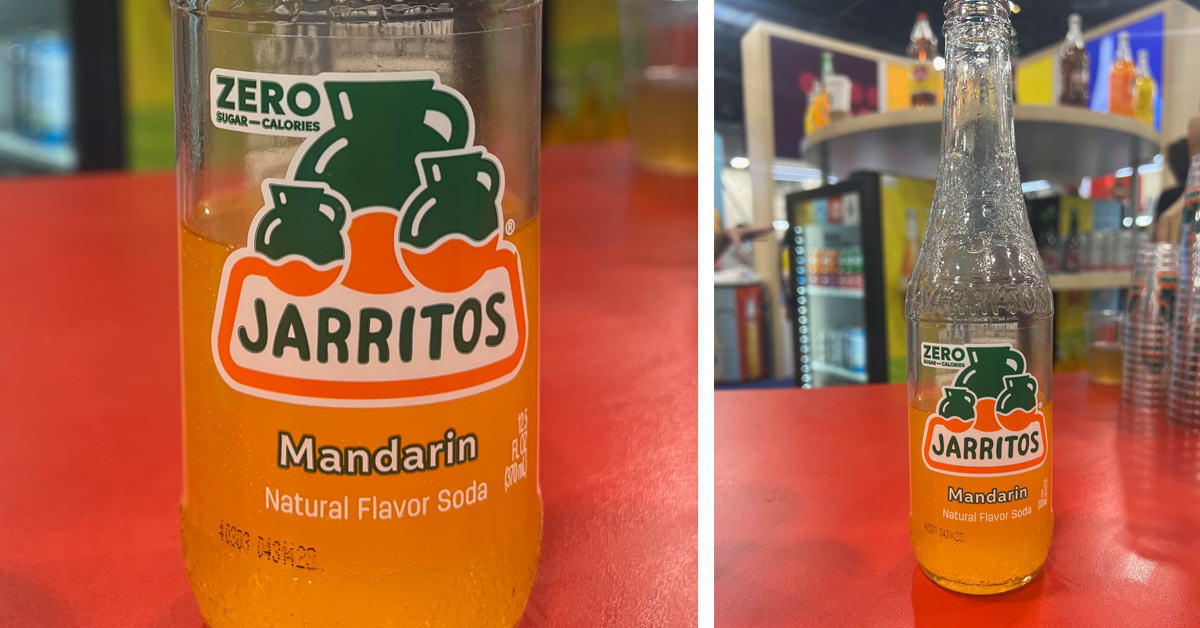Soda Notes: Olipop Slims Down, Jones Goes Pop
Olipop has been one of the beverage industry’s biggest growth stories over the past few years, but closing the gap in convenience may be its biggest task yet.
The prebiotic soda company’s NACS debut underscores the channel’s priority: it’s around 10% of Olipop’s total business right now, in around 7,000 doors, including Wawa, Pilot and Casey’s. But next year that number will go up to over 25,000 locations, with support coming from new channel-exclusive 12 oz. slim cans, rolling out now in seven flavors (the newest being the Mountain Dew-ish Ridge Rush) for $2.99 each.
But even the traditional soda purists are adapting their approach, starting with Jones Soda. As we previously reported, under the new leadership of CEO David Knight, the Washington-based company is in the midst of a revolution that has broken long-held adherence to strictly cane sugar-sweetened drinks in glass bottles. The target, Knight told us, was to move about 80% of the business to cans, which started in earnest this year with the introduction of Jones’ first cola in 12 oz. barrel cans.
Knight’s confidence in the brand’s potential is reflected in Jones’ slate of innovations, the most prominent being next-gen soda competitor Pop Jones. At 4 grams of sugar (a combination of Reb A stevia and cane sugar, plus 5% juice), 3 grams of fiber and 30 calories per 12 oz. slim can, the prebiotic soda is billed as “soda that pops!” and will hit shelves priced at around $2.49 each. There’s also Fiesta Jones in 16 oz. resealable aluminum bottles, a tropical-themed, full-strength (19 grams sugar) soda line aimed at Hispanic markets at $2.49 each. And the brand is side-stepping potential distributor conflicts with “energy” by marketing its new 16 oz. Jones+ line as “Caffeine + Cane Sugar,” with 160mg of the former and 47 grams of the latter. The price is $3.49, putting it right in the Red Bull/Monster zone.
Mexican soda brand Jarritos is also stepping outside of glass bottles, and out of carbonated drinks all together, with its newest innovation: Jarri Boba, a line of canned boba teas in fruit flavors like Mango Passion Fruit and Strawberry Guava. Brand reps at NACS stressed the product was an early prototype awaiting field testing, but that the company sees fruit-flavored boba (starch-based) as a potential differentiator.
But Jarritos is also once again attempting to crack a stubborn problem: creating and finding space for a zero-sugar subline. Past efforts came at “not the right time,” said reps, but the brand is hoping that a new Sucralose-sweetened formula currently being tested in one SKU (top-seller Mandarin) in California and Texas can finally unlock a long-coveted consumer segment.
What are category giants Coke, KDP and Pepsi doing amidst this soda upheaval? Sticking to their guns, mostly. As previously noted, all three brands are leaning into cream flavors and refreshing their flagship lines with new innovation this year. But for Coca Cola, at least, it’s looking in other directions for inspiration.
Recall that last year’s big NACS launch — Coca Cola Spiced, intended as a permanent new flavor — was developed based on data and feedback from its Freestyle fountain machines; that release was shelved after less than a year on the market. This year, rather, the inspiration for Sprite + Tea is coming from TikTok trends. Could protein soda be next?
C4: Candy Still Hot, ‘Ultimate’ Goes Cold
Along with GHOST (and Bang, don’t forget), Nutrabolt’s C4 line helped popularize unapologetically nostalgic candy flavors within the wave of “performance energy” releases over the past decade-plus. The evolution of that strategy was on display at NACS: no sign of licensed flavors from Skittles and Starburst this time around, as C4’s partnership with Mars phases out to make way for new opportunities via its recently announced Hershey’s pact.
First up in that pipeline are three new Jolly Rancher SKUs in the core 16 oz. Performance Energy line: Green Apple, Watermelon and Blue Raspberry. The brand’s track record means consumers now “expect flavor innovation,” said Louisa Lawless (EVP, Commercial), adding that data indicates Jolly Rancher as a top-ranking brand. While the Mars-licensed drinks are phasing out, that line is already in stores exclusively at H-E-B, with c-store expansion on deck for 7-Eleven, Kroger, Royal Farms and Casey’s stores, among others.
As for the outgoing flavors, C4 plans to reinvent those SKUs as part of its “candy shoppe” subset within the core line, slotting in alongside existing bestsellers like Frozen Bombsicle.
C4’s other big NACS reveal was Frost, a collection within its max-strength (300mg caffeine) Ultimate line in three flavors: Frost Bitten Citrus, Tropical Tundra Frost and Cherry Bomb Frost. The thermo-activated black can – the silver font turns blue when cold, a la Coors Light – is a big part of the appeal; 75% of consumers will purchase based on package design, Lawless noted. Consumers stumping for that level of energy (“carefree caffeiners,” as dubbed here) aren’t a huge market, but C4’s approach has been to cater intentionally to different subsets with its various lines.
And on that note, Bloom represents perhaps the most intriguing opportunity. Nutrabolt’s investment in the TikTok-powered brand back in January gave it a stronger foothold with female consumers in the broader health and wellness space. Its first ready-to-drink product, Bloom Sparkling Energy, was released exclusively in Target in July, but next year will see a national launch primarily targeting large format and mass channels.



